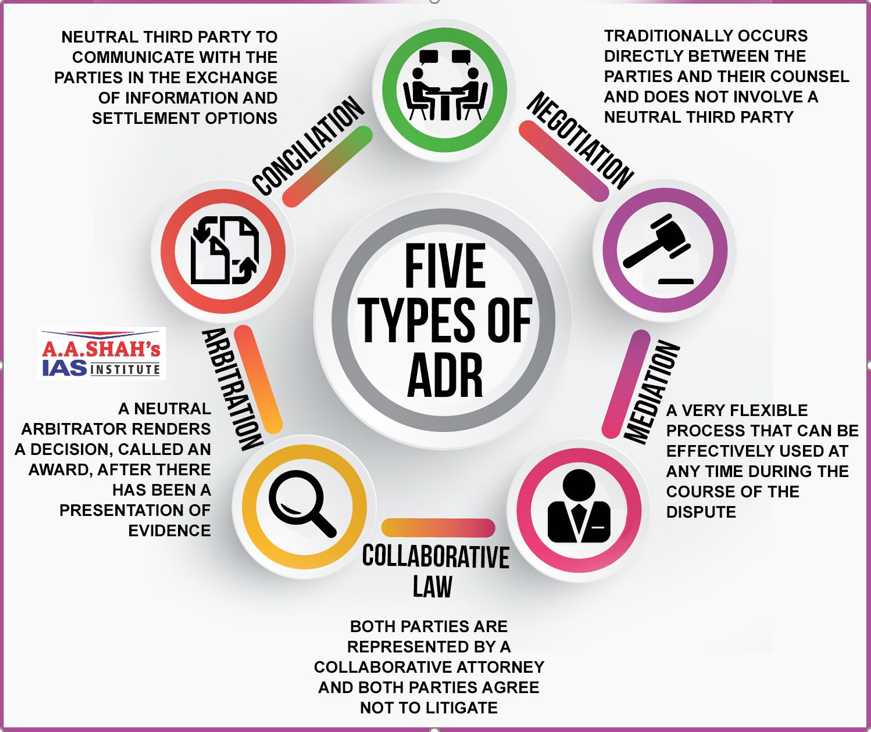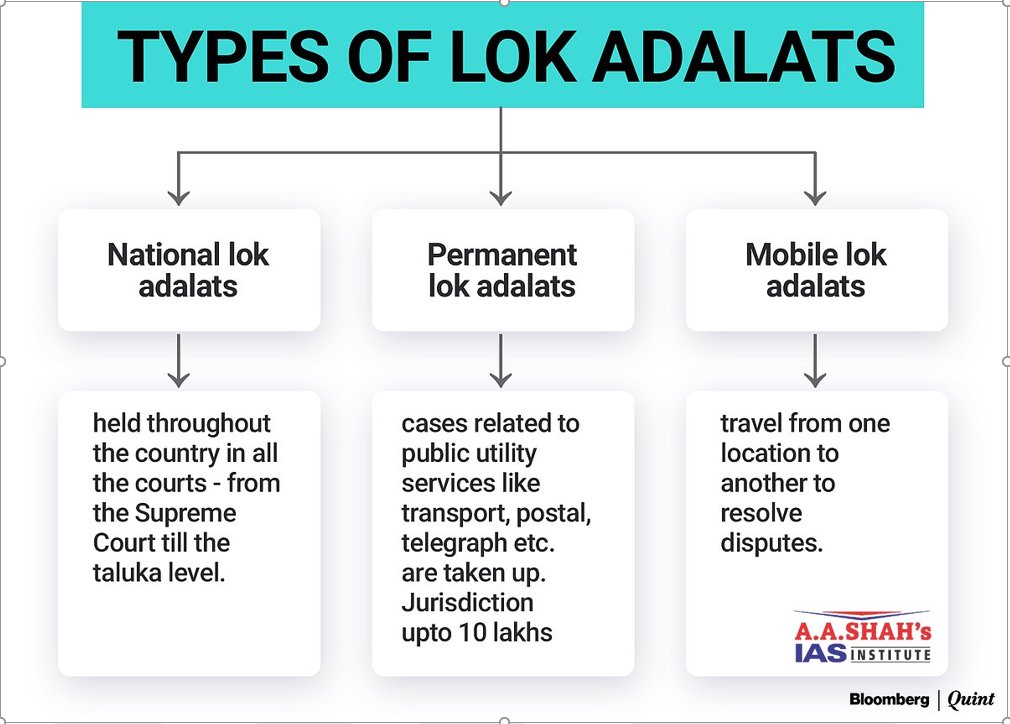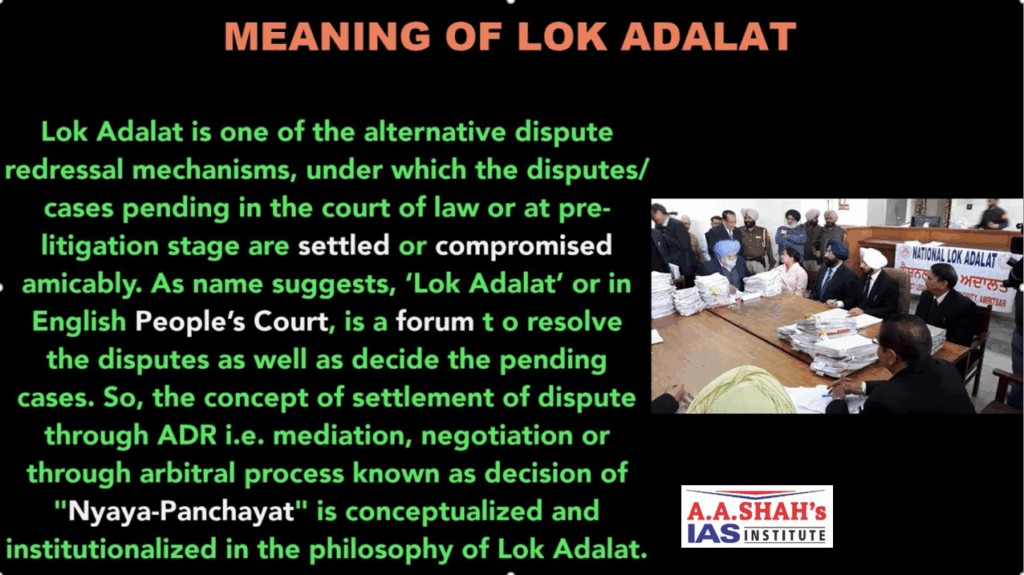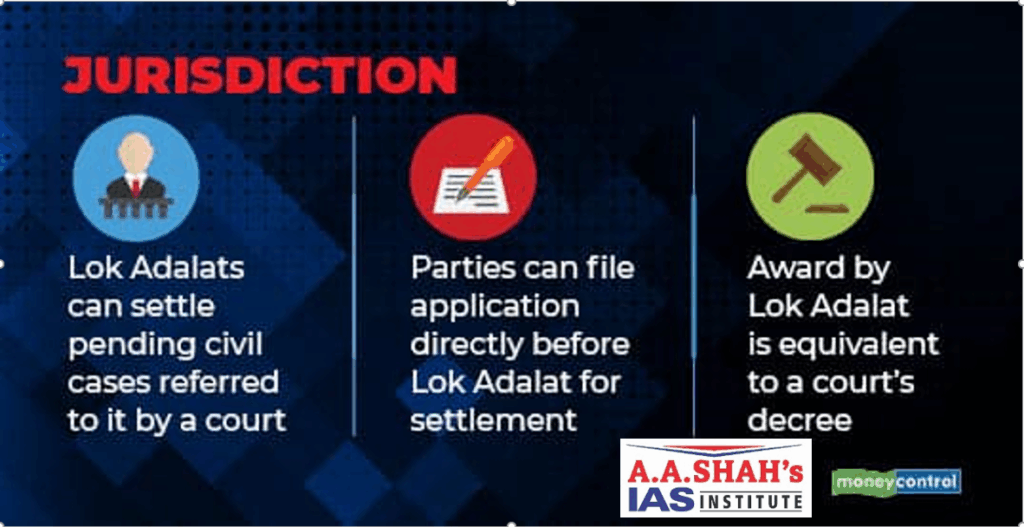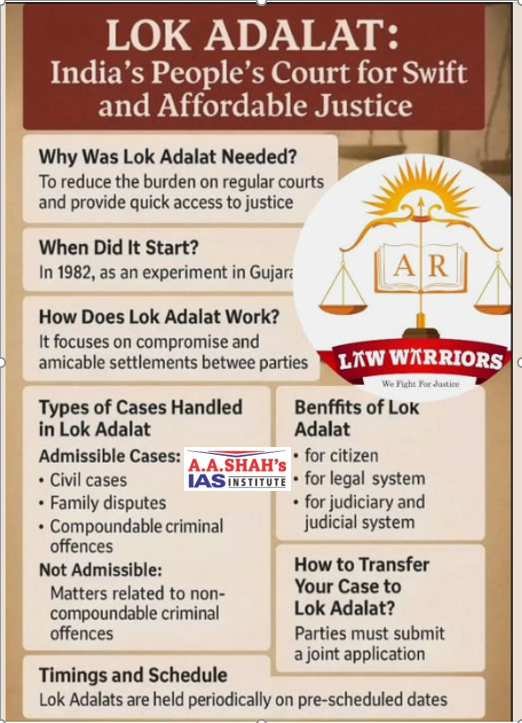Why is Alternative Dispute Resolution (ADR) crucial for India’s courts?
POLITY – JUDICIARY
6 OCTOBER 2025
- The Minister of Law and Justice recently reaffirmed the government’s commitment to legal reforms rooted in India’s civilisational ethos.
- Citing the doctrine of Panch Parmeshwar, which embodies the principle of collective consensus in dispute resolution, Law Minister, Arjun Ram Meghwal emphasised the need for global cooperation to strengthen Alternative Dispute Resolution (ADR) mechanisms.
Pending Cases
- The India Justice Report 2025 highlights significant challenges in India’s justice system, particularly including access, delays, and accountability. According to the National Judicial Data Grid (NJDG), the total number of pending cases in India is 4,57,96,239.
- In the Supreme Court, the number of pending cases is 81,768, and in the High Courts, it is approximately 62.9 lakh.
- These delays often result in injustice, increasing the focus on ADR as a faster, cost-effective, and socially inclusive way to deliver justice.
Legal Provisions for ADR
- The constitutional basis of ADR in India is enshrined in Article 39A, which mandates the state to provide equal justice and free legal aid.
- Various ADR processes, such as arbitration, conciliation, mediation, and judicial settlement (Lok Adalat), are recognised under Section 89 of the Code of Civil Procedure, 1908.
- To regulate processes, these have been incorporated into law. For example, under the Arbitration and Conciliation Act 1996 (amended in 2021), civil and compoundable offences like theft, criminal trespass, and adultery are resolved through a binding award or resolution, respectively.
- A compoundable offence is a less serious criminal offence where the complainant can reach a settlement with the accused, leading to the dismissal of charges and the suspension of legal proceedings.
- The Act also mentions the establishment of an Indian Arbitration Council, giving legal backing to arbitration agreements.
- The law fixes a maximum period of 180 days for dispute resolution, ensuring faster justice.
Significance of ADR
- On many occasions, even after such a solution, if a party is dissatisfied, they can exit the process after two sessions of mediation.
- Pre-litigation mediation for resolving civil and commercial disputes will not increase the number of pending cases; it will also strengthen interpersonal relationships by increasing interaction at the social level.
Lok Adalats
- Lok Adalats are governed by Legal Services Authorities Act, 1987, inspired by Article 39A.
- Apart from Permanent Lok Adalat (Section 22-B of the Act), provisions of the National Lok Adalat and e-Lok Adalat are directly helpful in strengthening the justice system, provided awareness about such a system is made effective and widespread.
- The first Lok Adalat in India was organised in Gujarat in 1999.
- The biggest feature of Lok Adalats is that their decisions shall be final and there is no possibility of appeal.
- This does not mean that the powers of these courts are absolute.
- The reason for no appeal is that these courts resolve disputes before litigation.
- In order to prevent any possible absoluteness, it is provided that the dissatisfied party can file a suit in a court.
